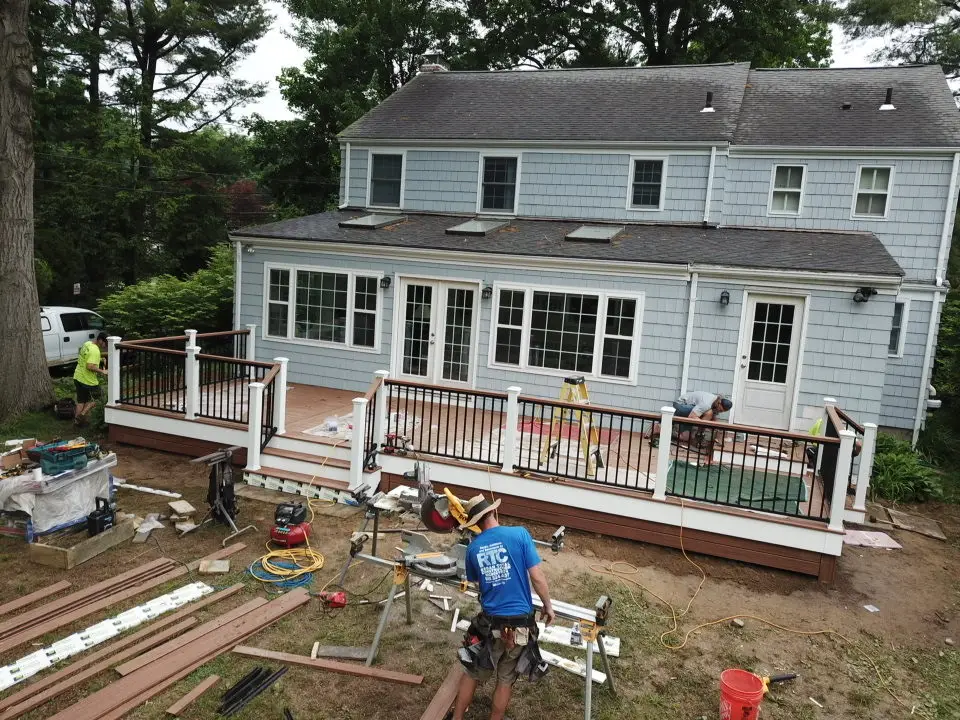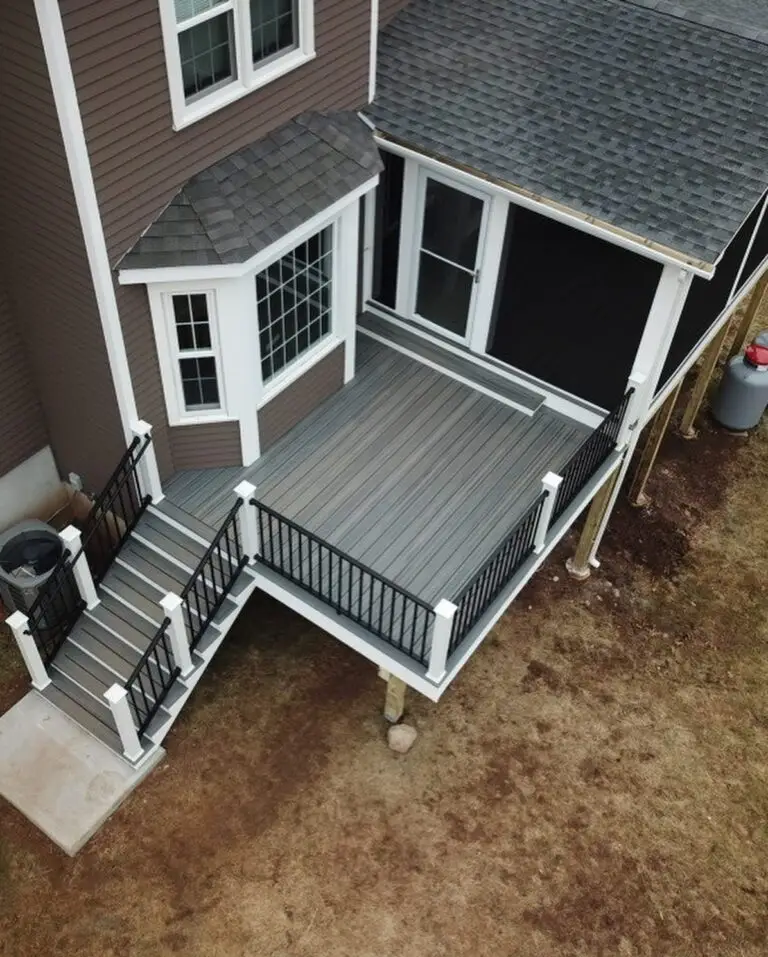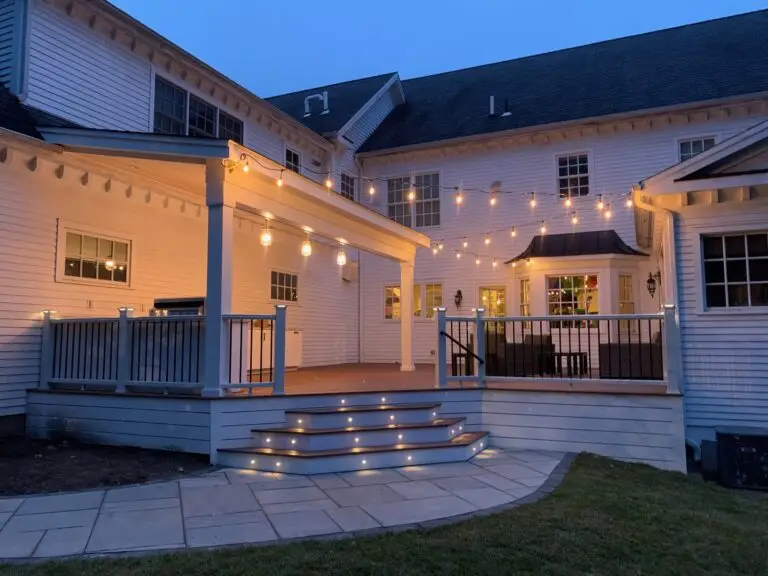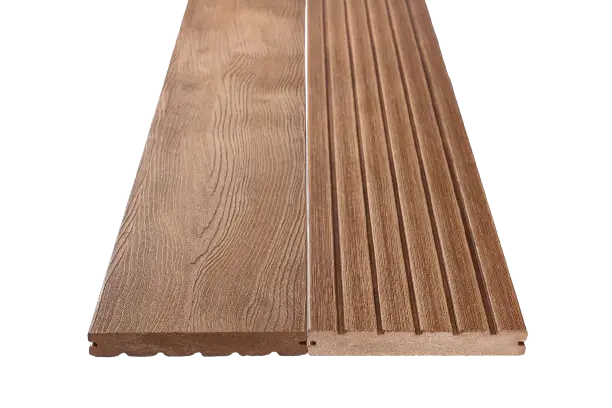Building a safe and secure deck
There’s no better way to kick back and relax than on a deck. Unfortunately, too many decks aren’t built the way they need to be and can become damaged or even pose a safety hazard to homeowners due to construction issues. All too often, deck designs are hastily drawn up on napkins or notebook paper. One of the main problems with that is these designs don’t take into account the many building code requirements necessary for constructing a safe and secure deck. If you’re looking to build a safe deck and up to code, here are some tips to consider straight from some of the top deck and porch builders.
Joist Size and Joist Spacing Issues
If you’ve attempted to build a deck yourself, or are working with amateur deck contractors rather than experienced deck and porch builders, one of the main problems you may experience is with your decking joists. Joists are the structural features that make up a deck’s frame. The minimum size joist necessary for a deck will depend on the number of footings as well as the number of beams being installed.
When working on your own, it can be a good idea to look at the materials readily available to you in pressure-treated lumber lengths so you can avoid making special orders, and use this to come up with a decking design. However, the best deck company for the job can craft joists for your deck that meets any special requirements needed, no matter the size of joists required for the deck design, ensuring it is up to code regardless of the situation.
In addition to the size of the joists, the spacing between the joists is also an important consideration, and one that should not be taken lightly. Generally, the spacing between joists will vary depending on a range of factors including the materials used and the size of the joists, making it important to know precisely what you are working with.
Issues With Deck Footing
Having a solid foundation for your deck is critical, and it’s your deck’s footings that provide this foundation and support. A deck’s footings determine the way loads are transferred to different sections of the deck, which is what makes them such a critical component of your deck’s design, and why you should rely on professional deck contractors with the knowledge and experience to build them up to code.
There are various types of deck footings, each offering different advantages. Additionally, building codes in your area may necessitate using different types of footings. Some types of deck footings include poured concrete footings which are strong, stable, and more permanent than other options; buried post footings, which are still stable but are lower in cost than poured concrete; and precast cement, which is easy to install but more expensive.
Your deck and porch builders can work with you to find an option that will offer you a safe and secure deck while also being cost-effective and meeting any other requirements you may have, such as ensuring your deck can hold a large amount of weight.
Deck Railing and Handrails
When building your deck, your deck contractors will begin by making sure that it has a solid foundation and framework. However, there are still further considerations to be made to guarantee that it is safe and code-compliant. Among the many things to seek out when looking for the best deck company is one that will be certain to build a structurally sound railing system for your deck.
All too often, deck railing systems are added on at the last minute in the deck building process, or even overlooked entirely as an unnecessary expenditure. However, deck railings are incredibly important for safety. They can prevent dangerous falls for everyone from children to the elderly. Railing systems are especially important for those who will be installing decks in areas where there is any potential for icy weather conditions, although even simple rainfall can lead a deck’s surface to become more slippery than usual.
In addition to railing systems for the perimeter of the deck, it is also important to think about the handrails that will be needed to go along the deck’s stairs. Stairs are a common source of slips and falls on decks and to be code compliant it is necessary to have a proper handrail system in place to prevent any possible injuries that could occur.
Other Things to Consider
While these are some of the most common things you must consider when building your deck, there are other less common and less well-known deck issues that you may be less aware of. This is where having the help of experienced deck contractors to build your deck can be extremely useful. One of the things that you may encounter when building a deck is the need for solid and level base support beneath stairs. Some options include concrete pads or even properly installed patios. Stair stringers must also have a connection bracket where they can be connected to the deck.
Other things that your deck and porch builders can help you with include design details that can boost the longevity of your new deck. For example, installing flashing tape to the top of your framing, such as the beams, joists, and stair support stringers can extend your deck’s lifespan. This is not expensive nor is it time-consuming to do, and can make a big difference. You may also consider checking out requirements from the manufacturer regarding the installation of their products and suggestions for fasteners and other hardware, which can also preserve longevity.
Are you ready to begin building a deck? If you are, or if you would like to learn more about how you can build a deck that is up to code, you can contact the team at Regan Total Construction. Our qualified deck specialists are ready to answer any questions you may have about this process.






